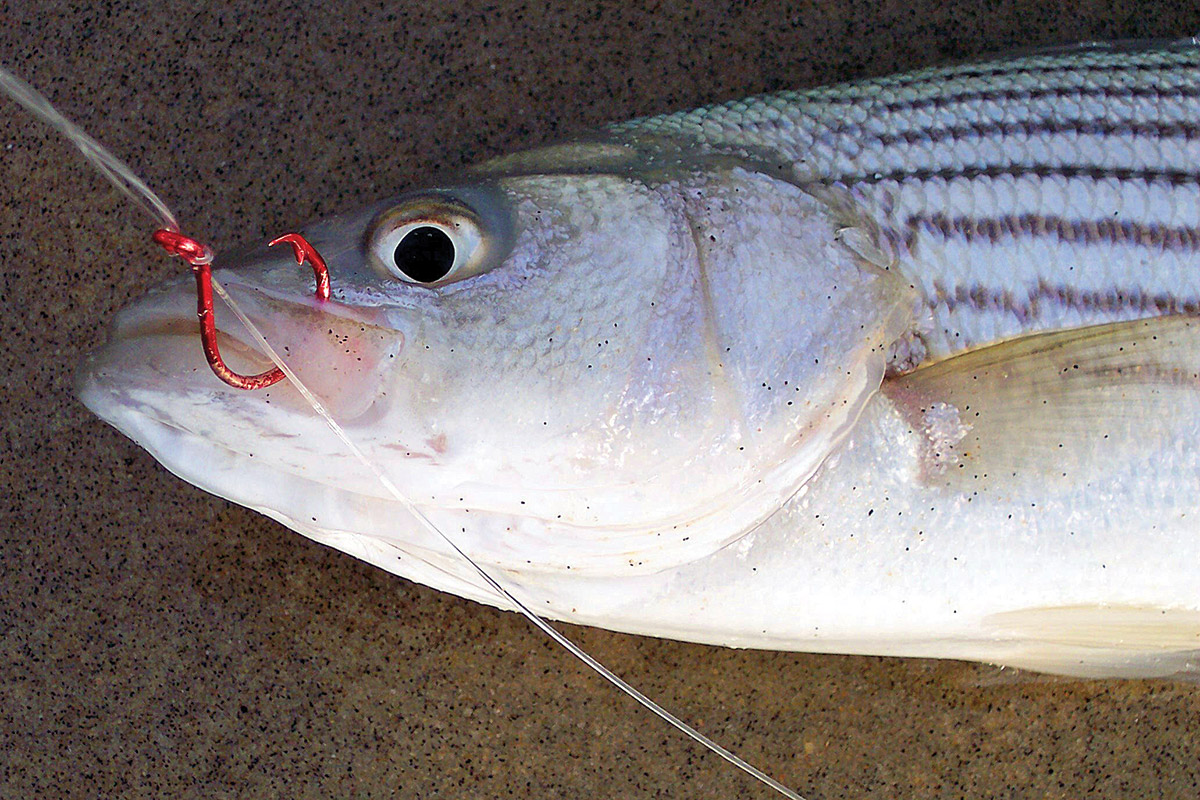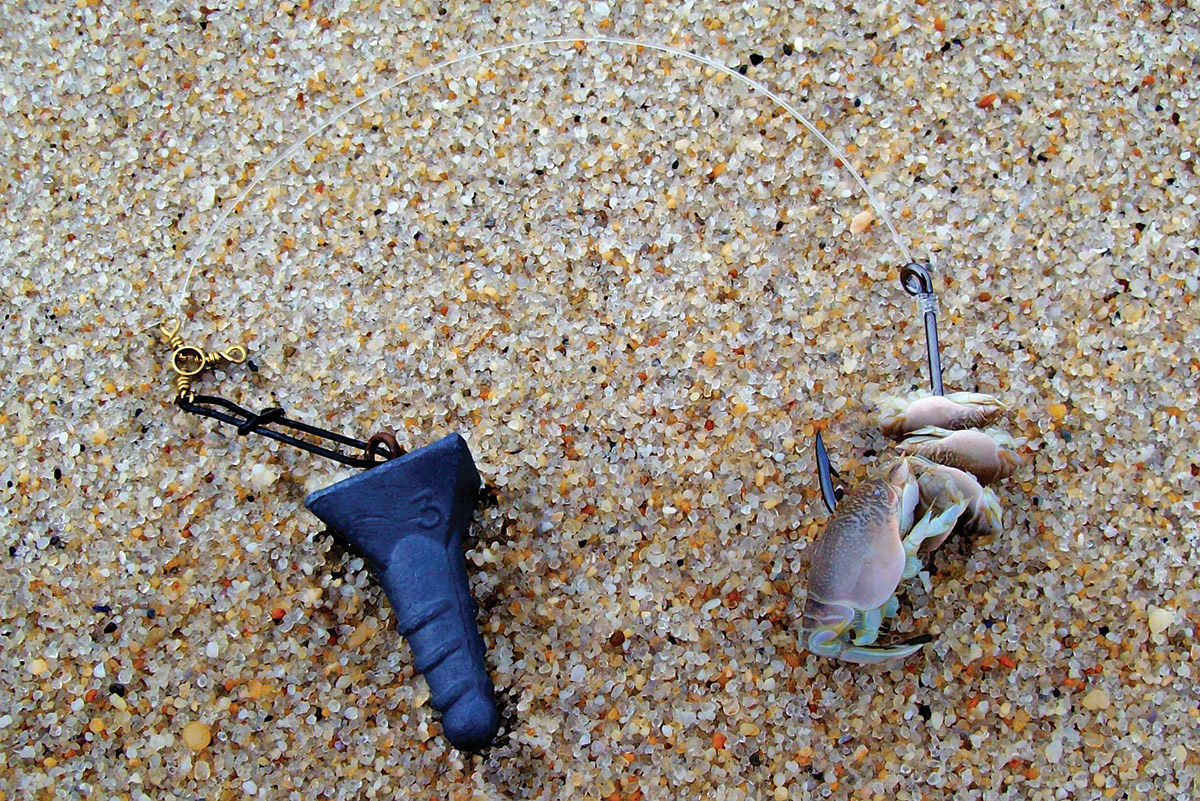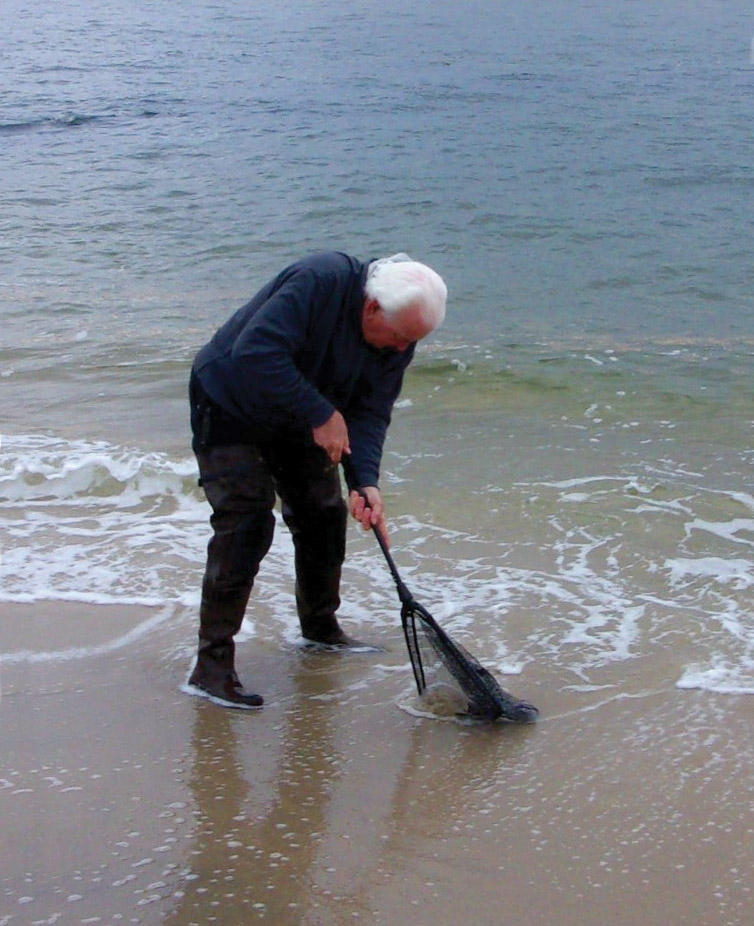
Don’t tell anyone, but it’s probably been the most effective tactic for catching surf stripers all summer long.
If the only real constant in life is change then that truism certainly applies to surf fishing. Although the sea is eternal, its personality and landscape evolve continually thus challenging anglers to embrace those changes and to adjust their angling tactics accordingly.
One of the biggest tasks for surfcasters to manage in recent years has been the imposition of beach restoration projects along our coastline to rebuild storm-ravaged beaches and to protect them from future coastal storms. Although beach replenishment has been popular with shore communities and homeowners, it has negatively impacted surf fishing wherever and whenever it has been applied.
Coastlines that used to harbor clams, mussels, small baitfish, crabs, and other structure-lovers are reduced to vast sandy underwater deserts with virtually little habitat in which marine life can settle and flourish. Ironically, sand mole crabs have found these new sandy environments to be a boon to their species and their very existence.
Plentiful Baits
Some form of sand crabs are found in many parts of the world; they are found on both our Atlantic and Pacific coastlines. On the Atlantic Coast, they are especially plentiful along southern beaches like those in Florida but also in somewhat lesser numbers all the way north to New England. They are abundant along Northeast beaches from the late spring through the fall with summertime their peak season; during the winter months they can be located on low-lying sandbars offshore.
Sand crabs are much more popular for bait in southern waters than they are here in the Northeast. They are the most effective bait in Florida for pompano; they are also effective down south for redfish, sheepshead, black and red drum, and other less celebrated species. In our waters, they are most attractive to striped bass and fluke but bluefish, sea robins, skates, weakfish, blackfish, blowfish, croakers, kingfish, dogfish, and other species will feed on them as well when they are available, and especially in the absence of other forage sources.
Given a choice during my long fishing career, I have always preferred to throw and work lures for striped bass, bluefish, and fluke – anywhere, anytime. During the spring, though, when there is a cold water bite I typically have opted to fish clams, fresh bunker chunks, and worms for stripers. Gulp swimming mullets and other soft plastics have taken precedence in the slow summer months. However, beach replenishment has seriously altered the dynamics of surf fishing: long-established seasonal patterns of how gamefish feed – and what they feed on – have been transformed. The forage that fish used to feed on oftentimes simply is not available anymore.

On several occasions in recent years, all my time and effort in presenting lures and packaging bait on rigs in the surf produced either little or nothing. However, I did notice how plentiful the sand mole crabs were on just about every beach that I fished. I remember that in previous years, some of the bass and fluke that I caught often spit up these miniature crabs. Eventually, I decided to gather up some of these crunchy morsels and see if I could catch anything on them. Very little else had been working.
Imagine my surprise when I started catching some short stripers, mixed-size fluke, and even a scattering of bluefish, sea robins, and other less glamorous fish on my new bait. The sand mole crabs had appeal because that was what most species of fish were feeding on in order to survive. I was not matching the hatch but I was matching what the fish were eating. Bingo! It all made sense.
Given this new perspective, I tweaked my surf fishing approach somewhat. I still work lures and present rigs with conventional baits most of the time that I am fishing but sometimes I use sand crab baits to put fish up on the sand when all other options disappoint. You need to do so, too. Here’s how.
Tools of the Trade
It is easy enough to gather as many sand mole crabs as you need – and the bait is free, other than your labor to harvest them. Although bait and tackle shops rarely sell sand mole crabs as bait, they do stock special rakes specifically designed to simplify catching these small critters in pretty sizeable numbers. Some anglers have fashioned some homemade devices with small mesh screens that do the job just as effectively. My preference is to just use a pretty heavy diamond jig – say an A27 – outfitted with a good-size treble with razor-sharp tines to do the job. Standing in the swash, I cast north and south in the swash then slowly reel in as the treble slices through the wet, soft sand. In no time, I have enough crabs impaled on the treble points to begin fishing. Doing so minimizes the loss of lives of crabs that cannot be used immediately. Live and dead crabs will catch fish but the fresher the crabs are the more fish you will catch.
Here are some suggestions on how to present sand mole crab baits. If you are targeting striped bass, I recommend using a single-hook rig with a 12- to-18-inch length of 30-pound test mono leader that keeps the bait on the bottom – where the crabs are naturally found and where predators are seeking them out. A 5/0 or 6/0 circle hook seems right for bass; put as many crabs on your hook as possible, leaving the hook point exposed. Hook your crabs through their underbellies and out the top middle of their shells; they attach quite well and can be cast normally with a minimum of crabs falling off during flight. Use a sinker as light as possible to let the baited hook move around with the wave action and currents; the feeding zone is close in to the beach. Set your rod in a sand spike with the drag open and wait for bass to find your rig.

Tactics are somewhat different for fluke. You will need a more lightweight rod/reel combo than you do for striped bass for obvious reasons. Use a standard fluke rig equipped with a 2/0 octopus or circle hook, a light sinker, and a 12-pound fluorocarbon leader of about 24 inches. Attach one or two large or medium size crabs on the hook, then cast the rig out and dead-stick it. The fluke will find it in due time.
You will have incidental and accidental catches: bluefish, sea robins, skates, tog, and the like. Occasional catches of southern species – not common in our waters – that simply love sand crabs are a distinct possibility. Since sand mole crabs are the most plentiful and reliable forage source along sandy bottom shorelines, a variety of species will eat them in the absence of other options.
Remember, beach restoration projects do have one positive feature for surf anglers: They have been a boon to New Jersey’s sand mole crabs. They love the sandy underwater environments found in such replenished areas. So why is that important to you? Sand mole crabs are plentiful just about everywhere, easy to catch, make great bait, and are free. And anywhere and anytime that sand crabs are found in the swash, they will catch elite local gamefish as well as a smorgasbord of lesser fish.
When all else fails with lures or orthodox baits, give sand mole crabs a try. Just bait, and wait!
| THE NAME GAME |
|---|
|
Depending on where you travel, you may hear these small, armadillo-shaped critters referred to as something different – sand crabs, sand fleas, and mole crabs to name just a few. Generally, they are small creatures usually no bigger than a thumb with a light gray, mildly hard shell. They feed mainly on tiny plankton found in the swash, the area where waves wash up on a beach. Wave action brings them ashore repeatedly where they quickly burrow themselves backwards into the sand. They do so to position themselves for feeding as well as for protection from a wide spectrum of shore birds that feast on their bountiful numbers. When a wave washes over them, they release a feather-like whisker that gathers the nutrients on which they survive. Ironically, these sand burrowers cannot move forward or sideways, only backwards. That is because mole crabs have no functional legs with which to navigate themselves along a shoreline. As the swash zone moves in-and-out with the tide and side-to-side with the current, so do the mole crabs. |




